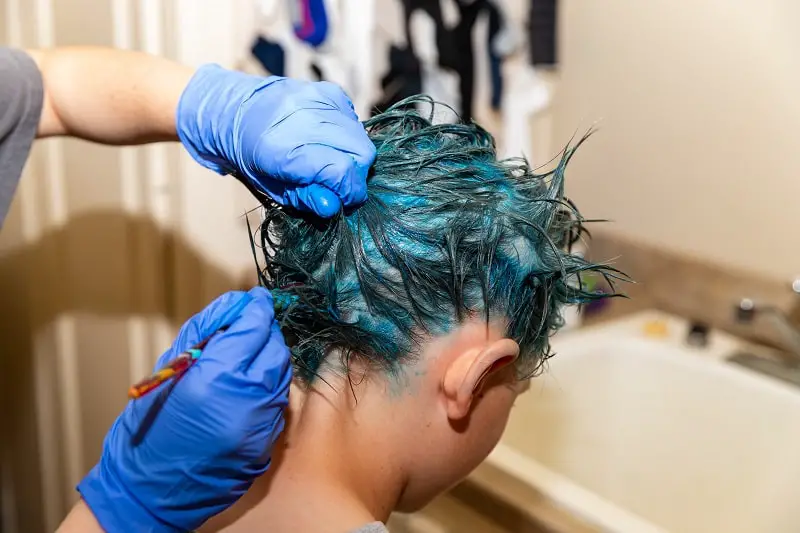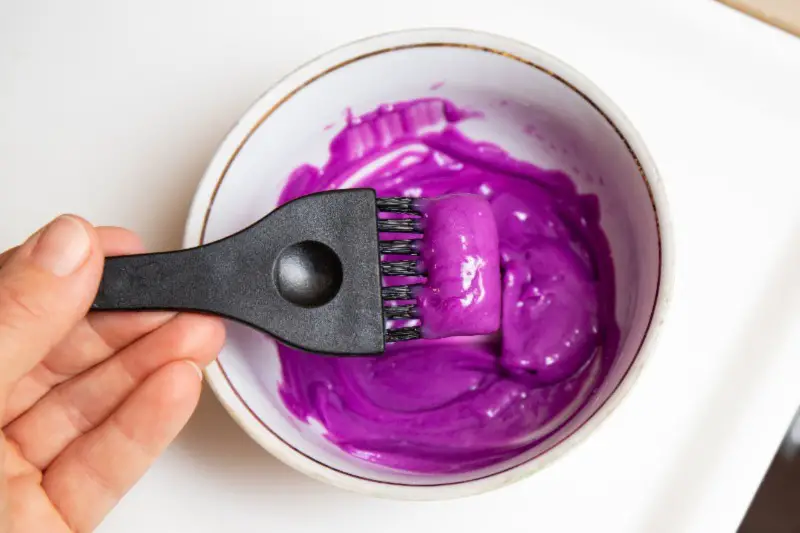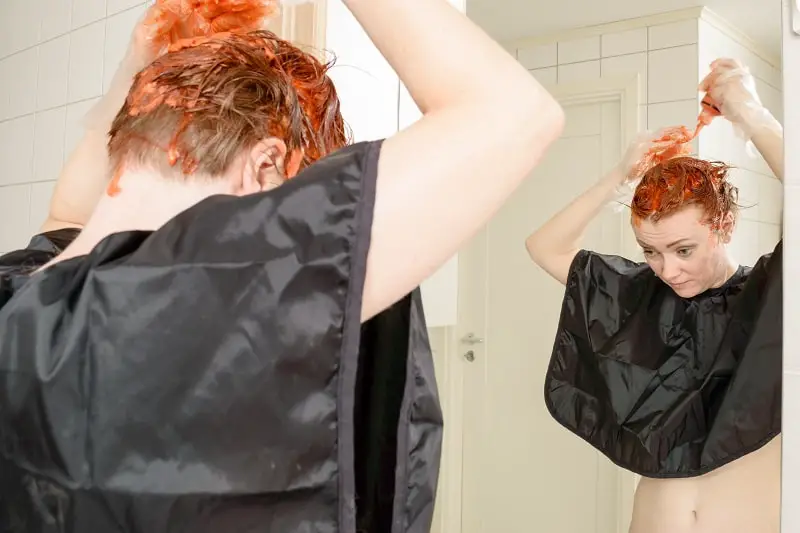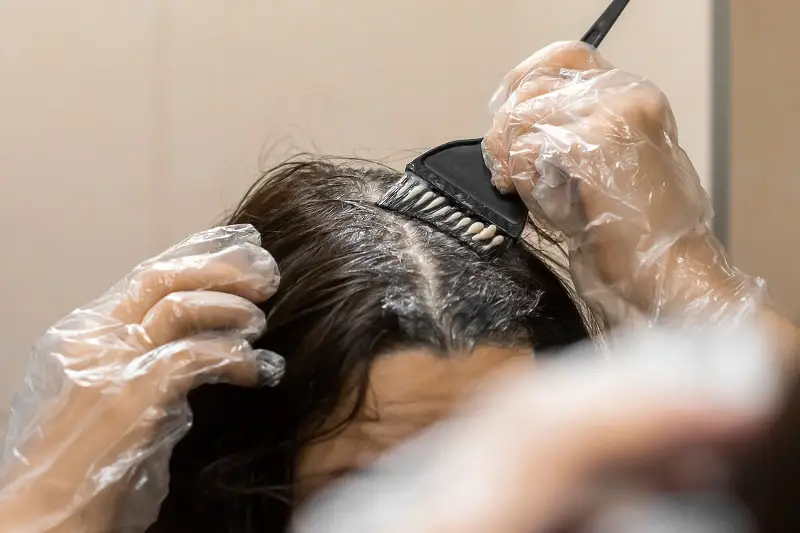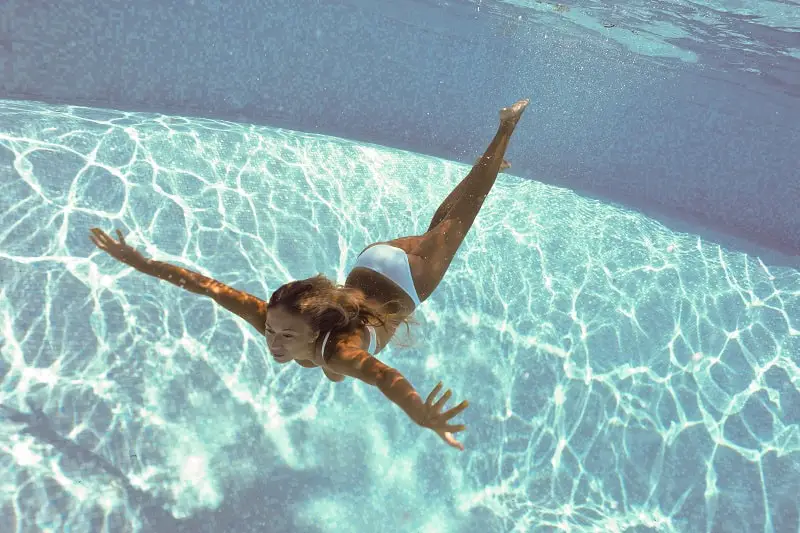Do schools allow hair dye? Well, it depends. Schools in different districts and different countries have different rules regarding their dress codes: A lot of the time, schools will allow students to express themselves in terms of hairstyles.
However there are instances of schools banning hair that is deemed “unnatural,” “unusual,” or even “distracting” by the school board. Also, the case can be that the school itself has no stated rules against hair dye and certain styles or lengths, but programs within the school can regulate a student’s hair.
Below we’ll explore the ins-and-outs of attending school with dyed hair, if schools can really tell you what to do with your hair, and what age it is considered appropriate—and safe—to color your hair.
Can You Go To School With Dyed Hair?
In most instances you can absolutely go to public school with dyed hair. However, the situation changes if you attend a private school; usually in this case you will be unable to dye your hair. On a similar note, Catholic schools also prohibit any hair dyes.
This includes bleaching and highlights. For example, a California-based Catholic school states on their website that hair cannot be of any extreme cut, style, or color.
Other Catholic schools across the States and around the world also state that they require students and staff to have “natural,” “undyed” hair. However, not in all instances do public schools permit dyed hair, nor do they have any legal obligations to allow it on school grounds.
For instance, a majority of public and private schools in India, Malaysia, and Indonesia do not allow students to dye their hair. When we look at Japan, more rebellious students will dye their hair, simply bleaching their hair or dyeing it a light brown shade; otherwise, Japan has fairly strict dress code policies.
In February 2021, a former student from a school in Osaka finally received a ruling on a lawsuit against her former school. She was harassed by teachers and administration to dye her hair black, as they did not believe her natural hair color was brown: They claimed her hair color was a distraction.
The school itself, as do many schools in Japan, prohibits hair that is dyed, permed, bleached, braided, or has extensions. The ex-student, now 21, was punished in various ways during attendance for her hair not being “black enough.”
In the end, the courts decided that the school had every right to enforce their rules, but that the former student should be paid in damages she received. Meanwhile, schools in Tokyo (as of 2019) have sworn to stop forcing students to dye their hair black.
Is Long Hair Allowed In School?
Again, it varies from school to school on if they have certain expectations for length of hair. As tends to be the habit, private schools have more restrictive rules on how you can and cannot style your hair.
Many private schools in the United States—and few public schools in more conservative states—have rules against male students having long hair; what they consider to be too long, however, changes depending on the school.
This variation in hair length is also seen in Catholic schools. Some prohibit hair that covers the ears, and others prohibit hair that is longer than the collar of a shirt (the latter also states that male students cannot have their hair in ponytails or buns if it is long).
Furthermore—although school standards vary on the type of institution, their respective countries, and the level of education being provided—restrictions on long hair tend to be directed at male, rather than female, students.
However, there are some schools that also prohibit female students from having too long of hair. If they do have long hair it must be pulled back during school hours in a ponytail or a neat braid.
Can Your School Dictate Your Hair?
If you and a parent (or guardian) sign an approval to obey and abide by the school board’s policies then, in a way, yes. Your school is able to dictate your hair if you give your consent. If you do not follow the rules that you agreed to at the start of the school year then they are able to reprimand you however they see fit.
More often than not, punishments for violating dress code policies include detention, in-home or at-home suspension, and having you stay home until the “issue” has been rectified. If you refuse to change your hair then it is likely that you will be unable to attend in-person classes as a result.
Also, while your dyed hair may not stir up trouble in school, you may encounter conflict in extracurricular activities: Specifically, in team performance activities (dance, cheer, pageantry) that require a specific uniform.
Should A 12 Year Old Dye Their Hair?
There is no reason a 12 year old should not be able to dye their hair, though they and their parents or guardian should be aware of the possible risks. Many people experience some degree of an allergic reaction from hair dye; further, hair dye is not meant to be applied to minors under the age of 16.
This decision will largely fall to the parent/guardian of said child since they will most likely be providing the dye or taking the child to the salon. If you are the guardian of a child in this particular situation, be aware that a salon can (and may) refuse dyeing services to the minor in question.
Is It Illegal To Dye Your Hair Under The Age Of 16?
In a report done by the BBC in Wales, it is noted that salons should not provide hair dyeing services to individuals under the age of 16. A large portion of this reasoning is because of the chemical ingredients in hair dye that could cause, in rare instances, severe and life-threatening allergic reactions.
While manufacturers in the United Kingdom admit that hair dye is not intended for anyone under the age of 16, some EU officials say that the warning that appears on packages is not clear enough. In other countries, this is also the case: Hair dye and bleach is not intended for use on children under the age of 16.
The ingredient that causes concern in permanent hair dyes is p-Phenylenediamine (also known as PPD). This chemical can cause allergic reactions in some individuals, and is in higher concentration in darker, permanent hair dyes.
The severity of the allergic reaction caused may vary, ranging from a localized reaction like an itchy face and scalp to a systemic (full-body) reaction.
Applying dye to those under 16 is against EU Regulations and is strongly advised against, although not illegal. Some salons and individual stylists feel comfortable dying a minor’s hair after a passed dye allergy test and with a parent’s consent—others vehemently deny service.
Another option stylists and clients have is using a natural, plant-based, PPD-free hair dye, although these dyes are not yet in frequent distribution.
Why Should Students Be Allowed To Dye Their Hair?
Once upon a time, colored hair garnered attention that some would see as distracting in a school setting. In a time and age when hair coloring was more taboo, many schools implemented rules to combat the growing trend of young people dyeing their hair.
Although, as with most things, the rules should be reexamined every few years and adjusted to reflect the changing times. More often than not, teens will dye their hair at least once.
Growing up is a tough journey of self-discovery and for some, that includes experimenting with hair color. To rob a child of an education through in-school (or at-home) suspension because their hair is colored something regarded as “unusual” by administration is—personally—ridiculous.
On another hand, it is understandable in a private school where uniformity is vital to campus culture or in a Catholic school where there are certain beliefs the administration is trying to maintain throughout the student body.
That being said, I do not see the purpose of restricting a student’s appearance in a public school setting where individuality is meant to be celebrated.
Final Thoughts: Do Schools Allow Hair Dye?
To sum it all up, it does depend on your school district—and on a larger scale, your country—on whether or not your hair is allowed to be dyed.
Dress codes are different for different reasons, whether or not they seem reasonable; schools can enforce whatever policies they have in place while you are in attendance.
If you are unclear on your own school’s policy regarding hair dye, ask a member of administration or look on your school’s website for more information. Also, chances are that your parent (or guardian) may have a copy of student expectations on hand from the start of the school year.

